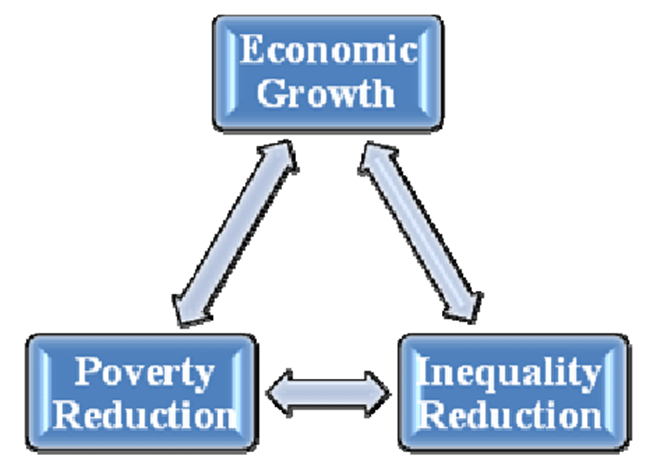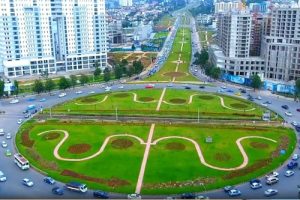
It is well comprehended that the Ethiopian government has recently launched a comprehensive and well-coordinated homegrown economic reform agenda with the goal to safeguard macro-financial steadiness and continue economic growth. Yes, successful macro-economic reform requires coordination and synchronization among foreign currency (forex), monetary, fiscal, financial, and capital market reforms.
To balance the urgent need for addressing macroeconomic imbalances with the need to minimize potential economic costs, the homegrown macroeconomic reform agenda has been implemented in the course of helping the nation boost its economy with careful calibration of the pacing, sequencing, and timing of specific reform measures. Keeping this in mind, The Ethiopian Herald had a stay with Ayalew Adugna, an agro-economist graduated from Haramaya University.
He said, “The reform agenda has been implemented through a structured and coordinated whole of government approach. Besides, implementing the proposed reform agenda requires mobilization of financial and non-financial resources. Enhancing domestic revenue mobilization, particularly significant improvement in tax collection, coupled with external resource mobilization will be at the core of the reform agenda’s financing strategy.”
As to Ayalew, as the concerted engagement of all segments of society— private sector, academia, and civil society— will be important, broad consultations need to be undertaken throughout the reform period to enhance ownership of the agenda by all stakeholders.
Definitely, Homegrown Economic Reform Program has aimed at unlocking Ethiopia’s development potentials designed to propel Ethiopia into becoming the African icon of prosperity in the long run.
He said that innovation and technological progress will play a central role in all national, regional and even universal economic development in the era of science and technology, globalization and digitalization, too. The ability to create, disseminate and exploit knowledge is a major source of competitiveness, wealth creation and enhancement of quality of life. A nation’s technological capabilities clearly underpin its competitive advantages and growth potential.
True, he opined, devising local mechanisms to promote homegrown economy is indisputably feasible and profitable as the nation would highly proud of its rich and abundant resources. The Reform Agenda has been a Pathway to Prosperity with a range of primary objectives.
“The primary objective of the agenda is to sustain the economic growth through creating an economic environment supportive of higher private investment and structural transformation. It encompasses three key pillars at the macro-financial, structural, and sectorial levels. Macro-financial reforms aim to reduce the risks associated with public debt, lower external vulnerabilities, arrest inflation, and enhance growth, investment, and exports. These reforms include strengthening public finances including through improving sector efficiency, strengthening the monetary policy framework with the objective to stabilize prices and support economic growth, and enhancing financial sector development and developing capital markets,” he added.
As to him, the structural reforms aim at addressing bottlenecks inhibiting private sector growth through stepping up reforms to ease the constraints to doing business, easing tariff and non-tariff barriers to international trade, improving the efficiency of public institutions, and improving services such as logistics, telecom, and electricity. The sectorial reforms aim to address market failures and address sectorial regulatory and investments constraints to promote investment in sectors such as agriculture and manufacturing, and unleash new growth potentials in sectors such as tourism, ICT, mining, and the creative industries.
The reform measures will set the foundation for a robust, resilient, and diversified middle income-level economy through the formation of a dynamic private sector and modern policy and institutional frameworks.
Yes, transformation, be it social, political or economic, or all merged, is of paramount importance in creating a more prosperous, inclusive and sustainable society, nation at a larger scale. Such a meaningful transformation will be made real via investing in citizens, revolutionizing agriculture and achieving food security, spurring a ‘take-off’ in manufacturing and services, reinforcing institutions, calibrating state participation in the economy, among others.
He further explicated that ensuring macro-economic stability to sustain the rapid economic growth; rebalance the public and private sectors’ role in the economy and unlock new and existing growth potentials are the primary steps to make a difference in all aspects of Homegrown Economic Reform Agenda.
Ayalew said, “The reform has predominantly targeted at strengthening public finances including through improving the efficiency of various sectors, gradually moving towards a flexible exchange rate regime to address external imbalances, strengthening the monetary policy framework with the objective of stabilizing prices and support.”
Since technological progress and innovation also play a central role in a country’s economic progress, the country can advance to the global technological frontier and narrows the technological gap, an innovation-based growth strategy focusing on investments in research and development (R&D). Establishing effective linkage between agriculture producers and commodity markets as well as the commercial value chain, accelerating growth in agricultural production with a focus on strategic crops for import substitution and exports as well as developing a legal framework for agriculture focused financial services have to well underscored for change.
“Ethiopia’s technological progress and development of innovation capabilities are the results of interactions among four groups of players in the economy including the administrative organizations that formulate and coordinate science and technology policies, higher learning institutions, the private sector that adopts and commercializes the products of innovation as well as institutions that interface among the different groups’ actors,” Ayalew opined.
A successful transition to an innovation-based growth strategy requires that the set of microeconomic capabilities and incentive structures, as embodied in the nation’s institutions and its technological infrastructure, evolve as the technological gap narrows down, he added.
Basically, he said, not only has Ethiopia to manage to survive and prosper, but it should transform itself from a third-world economy into middle-level- economy and at last into a first-world economy. Ethiopia has to have best experiences from other world nations in this regard. For example, as it reaches the limit of its investment-growth phase for instance, Singapore faces a new challenge of transforming itself into an innovation-driven economy. Besides, systematic efforts are being made to refashion its institutions and infrastructure to manage the transition to an innovation-based economy.
The public sector bureaucracy, in India, has been streamlined too, and there are nascent efforts to develop stronger global network links with key high-tech regions to expose research institutions to the global collaboration opportunities. To sustain the development of its technological capabilities, linkages between the publicly funded research institutions and tertiary institution, as well as with the private sector, are strengthened. Singapore has continued an ‘open-door’ policy to attract global talent. Our country, Ethiopia, has to draw important lessons from such nations which have recorded remarkable victory in due course of promoting the economic sector in all circumstances.
Yes, said Ayalew, the ongoing economic in general and macroeconomic move in particular will play a critical role in changing socio-economic and even socio-political perception towards progress, development and even entrepreneurship in Ethiopia.
As to him, country’s Home-Grown Economic Reform can serve as an example for other African countries if it aggressively capitalizes on the sector, and the government is creating a platform for sharing these experiences among African countries as it is aimed at transforming Ethiopia from a largely agrarian low-income country to an industrialized lower-middle-income nation for the time being.
Responding to the question revolving around the potential problems facing the macroeconomic reform implementation in the nation, he said the government should continue to well implement the Home-Grown Economic Reform and facilitate reconstruction efforts, narrow macro-economic gaps, and increase private sector participation in the economy. Besides, the government should work on an additional economic reform plan that will help to control inflation, improve foreign currency availability and administration, enhance domestic resources mobilization, and increase local and foreign investment.
It is encouraging to know that the government has an overarching framework for its reform agenda. The important issue is whether the government is in the driver’s seat in setting policy priorities and goals, and not whether it has utilized technical support from foreigners. It is natural, in fact, many developing countries, including China and India, have actively utilized technical support from international organizations.
Many foreign investors, who have been attracted by Ethiopia’s success in building infrastructure and human capital, are sitting on the fence, waiting until the foreign currency crunch is well addressed as macroeconomic reforms are clearly outlined and well-targeted to the identified disproportions.
This includes investments in strategic initiatives such as helping existing firms and industries grow, innovate, and develop diverse talent; creating an inclusive, homegrown entrepreneurship ecosystem; rebuilding infrastructure, cities and/or other neighborhood corridors as flywheels for broader market-based growth and wealth creation booms.
All concerned and the business community coupled with the relentless effort of the government are expected to fuel good governance by bringing local leaders and institutions together to solve problems and create the conditions in which huge state entities, line ministries, employees, families, businesses, and other key partners are willing and able to stay and invest in the nation.
Most importantly, the federal government is uniquely capable of making the scale of investments required to help local actors adapt to external forces—from natural disasters to technological shifts—and unleash the economic potential of places, he underlined.
Generally, since the uneven economic landscape is a national problem, not simply a local phenomenon, a lot has to be done towards bridging all sorts of gaps witnessed here and there. To make this a success, public, private, educational, and civic partners in each regional state often come together to help their businesses, industries, and workers adapt to new economic defies or opportunities thereby bringing about real difference.
Regional states, citizens at all levels and other development partners have to create firm collaboration for such a remarkable coalition is essential for economic recovery because these bodies are centers of competition in the new global economy and those that work together to leverage resources and use their strengths could potentially overcome weaknesses and boost potency, and these steps ultimately help meet the requirements of the contemporary global economic procedures.
BY MENGESHA AMARE
THE ETHIOPIAN HERALD THURSDAY 15 AUGUST 2024





